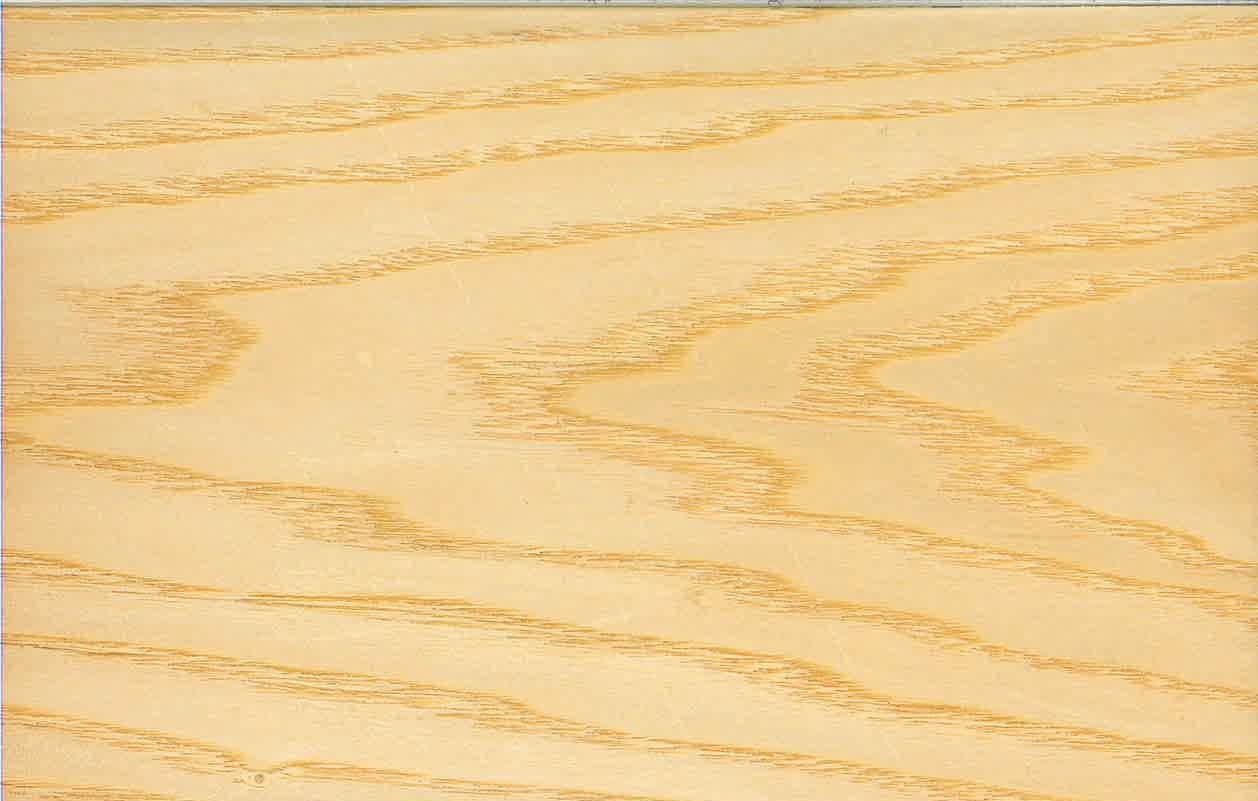The fight continues against hardwood diseases
Every few years, woodworkers learn of some new invasive pest or fungus with overseas origins that attacks our hardwood populations. Some of them have been killing trees for decades, while…
Every few years, woodworkers learn of some new invasive pest or fungus with overseas origins that attacks our hardwood populations. Some of them have been killing trees for decades, while others are new arrivals. They generally victimize one species or family and the lumber market takes a hit. Often, the fluctuation in price settles down quickly as suppliers find ways to combat the source of the problem or perhaps lower demand by encouraging us to buy a different species.
However, the shrinking globe seems to be increasing the frequency of new diseases, especially those related to beetles more than spores. While there’s no need to panic, it does make sense to know a little bit about the major problems and be prepared to switch buying habits and sales pitches if the need arises. For example, oak-eating caterpillars in Europe are already causing major problems and there’s always a chance they might head our way.
Emerald ash borer
In September 2012, Woodshop News quoted several hardwood suppliers saying they were aware of the emerald ash beetle, but that up until then the bug had not had a significant impact on supplies or prices. In 2012, retail quotes for FAS 4/4 white ash ranged from $2.77 to $3.55/bf. A quick phone survey of several suppliers at the beginning of July suggests that the ash borer is still having less effect on pricing than expected almost two years later. Retail prices have remained fairly constant.
For example, Rex Lumber in Acton, Mass., quoted a retail price this summer of $3.60 for a quantity of 30-40 bf. The slight increase is probably more related to Chinese buying than the borer. But several suppliers did acknowledge that white ash is slowly becoming more difficult to source. Prices haven’t spiked, they say, because domestic demand has waned somewhat. However, tightening supply and an improved construction market suggests that prices could soon trend upward.
The emerald ash borer (Agrilus planipennis) made its way from Asia to the U.S. sometime around June 2002, when it first showed up in Michigan. The assumption is that it arrived in pallets or crates that traveled up the St. Lawrence, through Lake Ontario and Lake Erie, and eventually arrived at the Port of Detroit, (although there is no conclusive evidence). The adult beetle is about 1/3” long and can fly. As an invasive species, it has no natural predators. The adults eat leaves and the larvae bore into sapwood and eat the conductive tissue that transports water and minerals from the roots to the leaves. It takes a year or two for them to kill a healthy ash tree.
Insecticides injected into the base of the tree, along with soil treatments, have had some success against this pest. However, in the first 12 years of its known presence, approximately 2.5 percent of the ash trees in the U.S. have died and the rate of mortality is expected to rise. Firewood has been a primary method of spreading the disease, which is now present in about half of the lower 48 states and is also widespread in Canada. The bug’s range in the U.S. runs from Minnesota to Maine and down to Georgia. White ash grows everywhere from Maine to Texas.
Armillaria root disease
An enemy of oak trees in particular, this fungus is widespread across the country and also attacks other hardwoods and even some softwoods. It’s not a new arrival, but with increased traffic between the states, it is spreading fast enough to make foresters take notice.
In many cases, Armillaria weakens trees so that other diseases can finish them off. According to the USDA, the victims now “include hundreds of species of trees, shrubs, vines and forbs growing in forests, along roadsides and in cultivated areas.” It is known regionally as shoestring rot, honey mushroom or toadstool disease and, because it commonly inhabits roots, it’s hard to detect unless the characteristic mushrooms evolve around the base of the tree or symptoms such as thinning or discolored foliage show up in the crown.
Chestnut blight
The causal fungus’s scientific name is endothia parasitica and it has almost completely eradicated the American chestnut. Now renamed as cryphonectria parasitica, the spore most probably originated in Japan and reached these shores around 1900. Between then and the start of World War II, it spread to almost every chestnut tree on the continent. In 1987, the largest remaining stand of American chestnut trees (some 2,500 plants in a grove near West Salem, Wisconsin) showed evidence of the blight and it has been a constant battle to preserve them.
However, there is room for optimism here. During the last 100 years, there has been a concerted effort to generate a new, resilient strain of chestnut tree and, during the last few decades, there have been some impressive results. The evolution of genetic engineering has certainly played a role, but the road to revival was actually paved by the traditional work of Dr. Charles Burnham of the American Chestnut Foundation. He practiced a plant-breeding technique called backcrossing. Burnham, who died in 1995 at the age of 91, decided to “marry the best characteristics of both the American and Asiatic species,” and create a new, blight-resistant version of the American chestnut. To avoid inbreeding, more than 500 American chestnuts have been incorporated into various generations and more are added every year.
In 2005, the foundation harvested the first potentially blight-resistant chestnuts, aptly named Restoration Chestnuts 1.0. Now, with an army of some 6,000 members and volunteers, Burnham’s organization has begun the mammoth task of replanting those seeds and returning the species to its natural habitat throughout the Appalachians.
Oak wilt
Another fungus (Ceratocystis fagacearum), this one attacks all types of oaks including red, white and live oaks. There is no known cure. Since being identified in 1944 in Wisconsin, it has been discovered in more than 20 states. On average, mortality rates are low — about 1 percent — but have been known to run as high as 11 percent in groves in Wisconsin.
According to the U.S. Forest Service, “infections have been found in 16 native oak species, including most of those of commercial importance.” Red oak seems to be the most susceptible: the leaves turn dull green or bronze, appear water-soaked, wilt and then turn yellow or brown. The tree soon loses most of its foliage, and the majority of its victims die within a year. White oaks take a little longer to succumb.
Some sap-feeding beetle species help spread the fungus spores (up to half the affected trees host beetle colonies), although a lot of contamination also happens when healthy oaks growing next to infected ones touch roots. As the attrition rate is low, oak wilt doesn’t currently have much effect on the national market, although it can have a strong impact on local harvesting.
Dutch elm disease
Perhaps the most notorious arboreal disease, Dutch elm disease is the result of another fungus (actually, three variations of Ascomycete, or sac fungi) that is spread by an insect. The elm bark beetle booked passage on a sailing ship from China, with a short stopover in Europe along the way. There, it was identified and documented by two Dutch researchers, Bea Schwartz and Christine Buisman, hence its name. The first European wave was detrimental but not catastrophic.
Dutch elm disease reached America in 1928, relentlessly spreading inland during the next three decades. In the late 1960s, a second strain was exported from the U.S. back to England and ravaged the continent, killing up to 90 percent of the elms in Britain and France. Meanwhile, the disease continued its progress in North America, striking through much of Canada until only Alberta and British Columbia now remain free of it. Most recently, New Zealand came under attack in 2013. There are still healthy populations throughout North America, most notably in Manitoba, but elm is hardly a viable commercial species at this time.
In an attempt at defense, the tree actually chokes itself to death by plugging the xlyem (essentially, the equivalent of our veins and arteries) with gum and tissue. Deprived of water and nutrients, leaves in the upper branches begin to wither in summer and soon the roots fail.
There are some new and effective treatments and some naturally resistant trees have been developed through hybridization. About 10 sites in the U.S. and two in Europe are actively cultivating the species and there has been a great deal of success of late. However, as elm trees are not considered mature until they are 60 years old, the recovery process is slow. Some elm is being made available, especially in western states and Canada and cloned seedlings of successfully resistant trees are already available commercially. So our grandchildren might once again build elm furniture.
Other enemies
A large host of other beetles and borers attack trees and most of these are part of the natural cycle of attrition. Asian longhorn beetles and wooly adelgids (the latter are particularly attracted to hemlock) are among them, as are Ips beetles, Pales weevil and various aphids. Citrus longhorn beetles are particularly fond of maple trees in China and Japan, so they are being watched closely here.
New to Britain in 2012, the Chalara dieback is a disease that is deadly to ash trees, so it, too, is on the U.S. watch list.
Other threats worth watching are a family of cankers (visible as dark, sunken areas or black bark, sometimes with orange edges). Cytospora canker is the most common of these.







